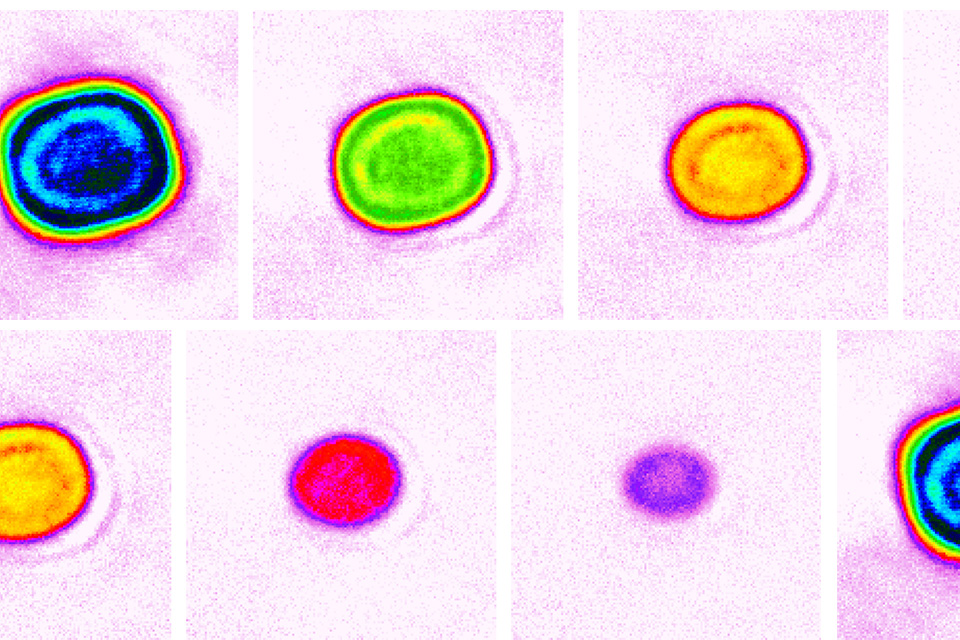
False-color images showing variations in atom numbers (1-5 atoms) and density in different lattice cells of JILA’s strontium lattice atomic clock. JILA researchers observed effects that arise from the emergence of multi-particle interactions when three or more atoms occupy a single cell. (Original image/data panels from NIST https://www.nist.gov/image/18jila001-many-body-physicsjpg. Credit: Aki Goban, Ye group/JILA)
News from NIST
Researchers at JILA have, for the first time, isolated groups of a few atoms and precisely measured their multi-particle interactions within an atomic clock. They compared the results with theoretical predictions by NIST colleagues Ana Maria Rey and Paul Julienne and concluded that multi-particle interactions occurred.
"This experiment demonstrates a remarkable ability to both measure and calculate the quantum properties of just a handful of atoms held in single optical lattice cells,” says Julienne, who is also a JQI Fellow. "This type of setup is a superb platform for precision measurement and for controlling many-particle quantum dynamics and entanglement, with applications to few-body physics, many-body physics, and quantum information.”
The advance will help scientists control interacting quantum matter, which is expected to boost the performance of atomic clocks, many other types of sensors, and quantum information systems. The research is published online in Nature.
Read NIST's full story, written by Laura Ost.